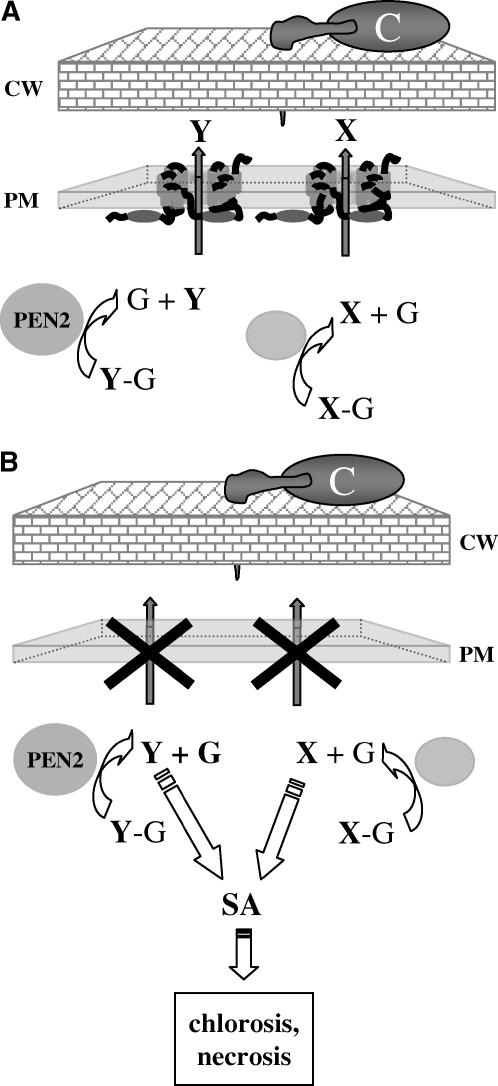Figure 7.
Model for a Role for PEN3 in Penetration Resistance.
(A) We hypothesize that the PEN3 ABC transporter exports toxic secondary metabolites or other toxic materials (X and Y) to the apoplast at sites of attempted invasion. We speculate that the barley and pea powdery mildews are sensitive to these toxins, whereas the Arabidopsis powdery mildew is either less sensitive to this toxin or fails to fully activate this defense mechanism. Because some ABC transporters can transport a variety of related compounds, we assume that PEN3 exports a family of chemically related compounds, which may have varying toxicity. The glycosyl hydrolase PEN2 may activate one of these toxins (Y) by hydrolysis of a nontoxic precursor metabolite (Y-G). We assume that other enzymes activate related toxins (X).
(B) In the pen3 mutant, the sustained intracellular accumulation of PEN2-activated and related toxin(s) in interactions with the Arabidopsis powdery mildew leads to the activation of the SA pathway and the development of chlorosis and necrosis.
C, conidium; CW, cell wall; PM, plasma membrane.

